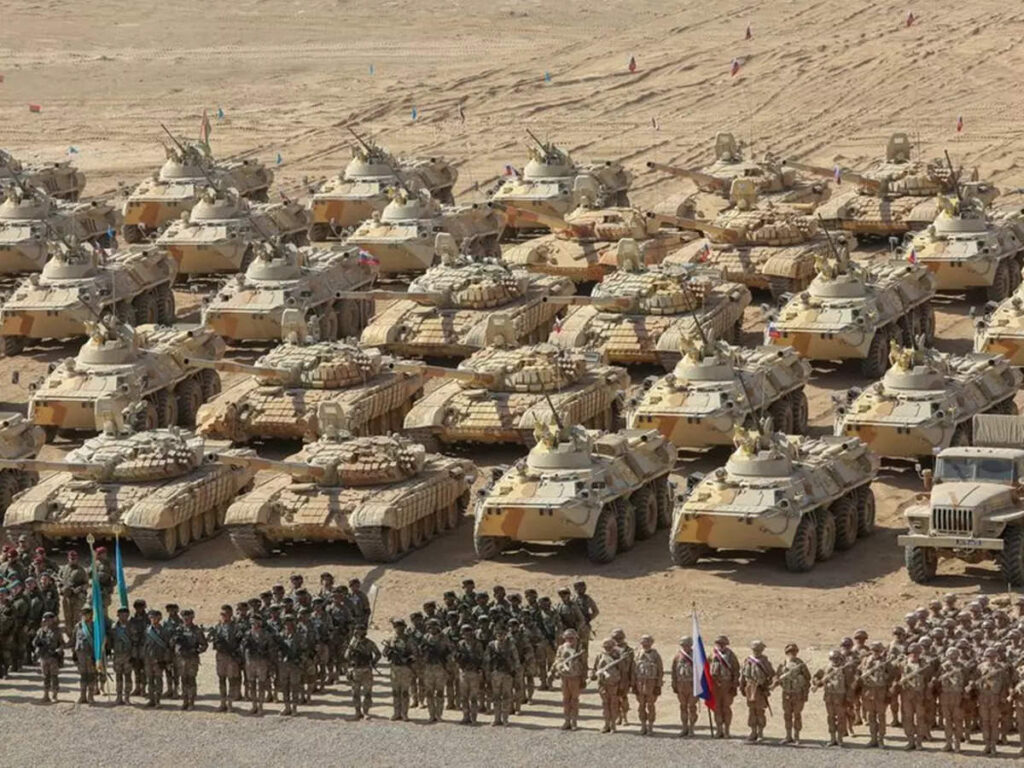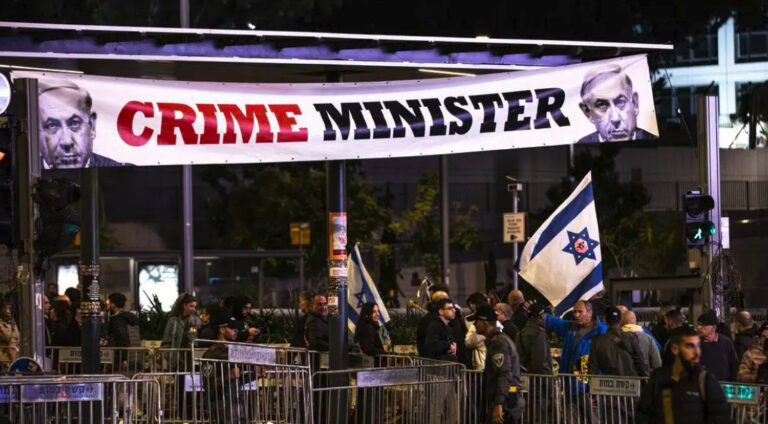
By:Air
STRATEGIC ASSESSMENT- Facts about the current war in Ukraine russia with ukraine changed the status of russia war with america and nato and the west.
This war is a war that shows the strength and prestige of each,America, nato and west will be ashamed if they lose the war against russia.
Ukraine is only used as a drama actor in this war and The fact is America, Nato and the West don’t want the war to end soon.
The images posted to Twitter by the Ukrainian Armed Forces are labelled with a triumphant caption, declaring that this was the result of “hits from Javelins on [Russian] military equipment”.
The Javelin, a shoulder-held anti-tank weapon that shoots heat-seeking rockets hurtling towards targets up to 4km (2.5 miles) away, can be controlled by a portable unit that doesn’t look much different from a video game console – but can send a metre-long projectile straight through the side or top of an armoured tank.
The very presence of the American-made weapons “causes panic” among Russian troops, the Ukrainian military claims – and the US has sent thousands of them.
In total, more than $3bn in military aid has been sent to Ukraine since Russia invaded on 24 February.
The latest $800m (£612.5m) package, announced by President Joe Biden on Thursday, also includes heavy artillery, howitzers and tactical drones to be used on the flat plains in eastern Ukraine. Mr Biden also banned Russian-flagged ships from entering US ports.
Other armaments sent so far include drones that can be turned into flying bombs and anti-aircraft weapons that can shoot helicopters from the sky.
What has the US sent Ukraine?
The most recent US security aid package for Ukraine includes “dozens” of howitzers – a type of artillery that fires shells at targets on high trajectories – as well as 144,000 rounds of ammunition and tactical drones.
“We’re in a critical window now of time where they’re going to set the stage for the next phase of this war,” Mr Biden said on Wednesday, adding that the weapons are a reflection of “Ukraine’s needs” as the war shifts towards the largely flat terrain of Ukraine’s eastern Donbas region.
Previous announcements of weapons for Ukraine have included a wide range of military equipment, ranging from body armour, helmets and rifles to radar systems, armoured vehicles and Soviet-designed helicopters that once belonged to Afghanistan.
https://www.youtube.com/watch?v=n8uspxtVw_I
Now the weapons used by the Ukrainian army are all from America and Nato and the West
Besides Javelin missiles, the most powerful weapons include Stinger anti-aircraft systems, once famously used to shoot down Soviet planes in Afghanistan.
The US has also shipped hundreds of “Switchblade” drones, which are designed to be sent crashing into enemy targets before exploding.
While US defence officials have been reluctant to provide Ukraine with weapons that its forces weren’t already familiar with, this week Pentagon spokesman John Kirby confirmed that a “small number” of Ukrainian troops will be trained on how to use the Switchblades, as well as US-supplied artillery systems.
“We’re doing the best we can to focus on the kinds of capabilities we know they need and that they want and are using, and…secondary to that, to try to get them systems that they don’t need a lot of start-up time for, that they can put in the field almost immediately,” Mr Kirby said.
Additionally, the Pentagon said on Thursday that it is giving Ukraine “ghost drones” – similar in capabilities to the Switchblade – that Mr Kirby said were “rapidly developed by the Air Force in response specifically to Ukrainian requirements”.
The range and specific capabilities of the “ghost drones”, however, are not publicly known.
What has this meant for Russian ground and air offensives?
“Sometimes we will speak softly and carry a large Javelin, because we’re sending a lot of those in as well,” Mr Biden said this week of US aid to Ukraine.
The invading Russian forces “are primarily mechanised forces” – meaning armoured convoys – so “the best thing you can do is take them [the vehicles] out”, said former US Army Colonel Christopher Mayer.
Ukraine has received a variety of anti-tank systems from several countries, which helps increase the “lethality” of Ukraine’s forces against Russian vehicles, Mr Mayer said.
And while their claims can’t be independently verified, Ukrainian officials say they are putting the weapons to good use. As of this week, Ukraine claims to have destroyed more than 800 tanks and 2,000 other Russian vehicles.
Anti-tank weapons, however, do nothing to help Ukraine combat Russia’s air force, which for eight weeks has been striking targets across the country.
That requires anti-aircraft weapons, about 25,000 of which had been given to Ukraine by the US and its allies by 7 April.
The system has been seen in conflicts around the world since 1981. It was most famously used in Afghanistan, where US-supplied Stingers helped bring down hundreds of Russian aircraft and helicopters during the Soviet occupation.
It is effective against low-flying helicopters or aircraft at up to about 3,800m (12,400ft), making it relatively useless against higher-flying Russian bombers.
Maintaining an ability to strike these aircraft has been a high priority for Ukrainian military planners, particularly since some of its own air defence systems have been destroyed during the war.
The shipment was part of a deal with the US, which agreed to deploy US units fielding an American-made anti-aircraft system – Patriot missiles – to Slovakia.
What has the US not sent?
The US has so far been reluctant to send Ukraine US-made tanks, arguing that Ukrainian troops aren’t familiar with the vehicles.
“The kinds of tanks they know how to use are not the tanks that we have in our armoury,” Mr Kirby said at the Pentagon on 19 April. “But other nations have provided some tanks [and] some nations have provided spare parts so that they can get their inoperable tanks operable again.”
US allies, however. have provided spare parts that have allowed its air force to continue to fly limited sorties against a numerically-superior Russian air force.
On 20 April, a senior US defence official said that Ukraine has 20 more aircraft available to them now than three weeks ago as a result of allied-supplied spare parts.
Nato and the west don’t want this war to end there is interest in this war,they should stop this war with dialogue with russia.
Spurred into action by reports of atrocities in Ukraine, NATO countries agreed Thursday to ramp up the supply of weapons to Kyiv, including hi-tech arms, amid concerns that Russia is about to launch a large offensive in Ukrarine’s eastern Donbas region.
NATO, as an organization, refuses to send troops or weapons to Ukraine or impose a no-fly zone over it to keep the trans-Atlantic military group from being drawn into a wider war with nuclear-armed Russia. Individual NATO countries, however, have provided anti-aircraft and anti-tank weapons to Ukraine, as well as equipment and medical supplies.
“There was a clear message from the meeting today that allies should do more, and are ready to do more, to provide more equipment, and they realize and recognize the urgency,” NATO Secretary-General Jens Stoltenberg said after chairing a meeting of allied foreign ministers in Brussels.
Stoltenberg declined to say which countries were stepping up supplies or what kinds of equipment they might send, but he said: “Rest assured, allies are providing a wide range of different weapons systems, both Soviet-era systems but also modern equipment.”
U.S. Secretary of State Antony Blinken said the “sickening images and accounts coming out of Bucha and other parts of Ukraine” have strengthened the West’s resolve to punish Russia and step up support for Ukraine.
Blinken said the United States is “looking across the board right now not only at what we provided, and what we continue to provide, but whether there are additional systems that could make a difference.”
One of the drawbacks of sending modern arms is that Ukrainian troops would have to learn how to to use them, but some NATO nations raised the possibility of providing training outside of the war-ravaged country.
Britain was also outspoken about its intentions.
“We’ve agreed to step up support for Ukraine and we’ve also recognized that the conflict has entered a new and different phase with a more concentrated Russian offensive,” British Foreign Secretary Liz Truss said.
“There was support for countries to supply new and heavier equipment to Ukraine so that they can respond to these new threats from Russia. We’ve agreed to help Ukrainian forces move from their Soviet-era equipment to NATO-standard equipment on a bilateral basis,” Truss said.
After talks with his NATO counterparts, Ukrainian Foreign Minister Dmytro Kuleba said he was cautiously optimistic that some countries would boost weapons supplies to his nation. But he warned that those arms must get to Ukraine quickly, with Russia set to attack more widely in the east.
“Either you help us now — and I’m speaking about days, not weeks — or your help will come too late,” Kuleba said his message was to NATO countries. Asked what more his country was seeking, Kuleba listed planes, land-based missiles, armored vehicles and air defense systems.
He also criticized some Western countries for failing to impose sanctions quickly enough, or of acting too late, highlighting his point with the reports of war crimes in the northern town of Bucha.
“How many Buchas have to take place for you to impose sanctions? How many children, women, men, have to die,” Kuleba said, “for you to understand that you cannot allow sanctions fatigue, as we cannot allow fighting fatigue?”
Some NATO countries sending weapons have been making a distinction about what kind of support they can provide, saying Ukraine should only receive arms for defensive purposes and not offensive weapons like war planes or tanks.
But Stoltenberg rejected the rhetorical arguments. “Ukraine is fighting a defensive war, so this distinction between offensive and defensive weapons doesn’t actually have any real meaning,” he said.
Stoltenberg said he has “urged allies to provide further support of many different types of systems, both light weapons but also heavier weapons.”
Despite the allegations of Russian war crimes and warnings that more atrocities might emerge, it appears unlikely, at least for now, that the world’s biggest security alliance will agree as an organization to arm Ukraine and help end Europe’s biggest land war since World War II.
“The author is a war analysis”





